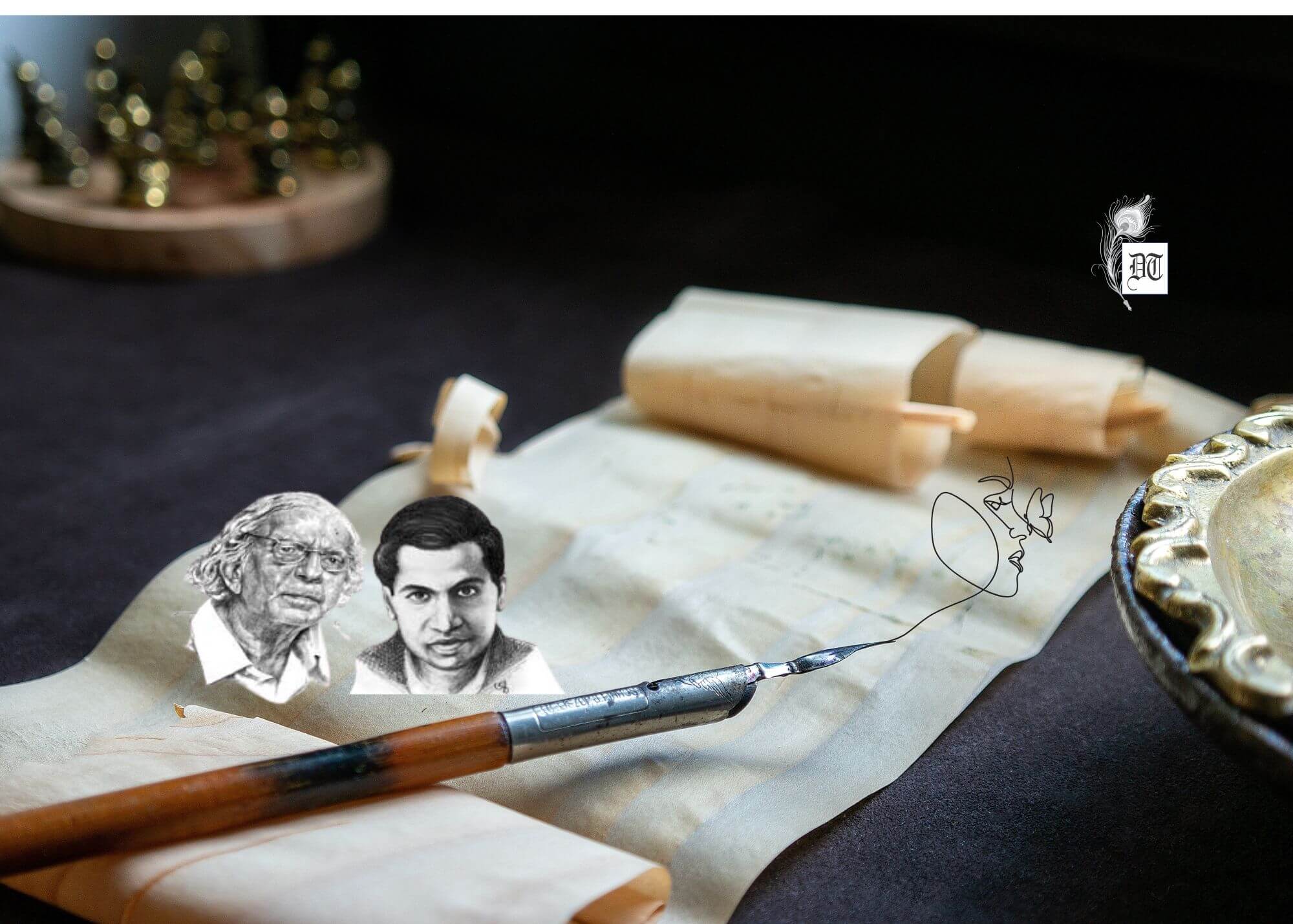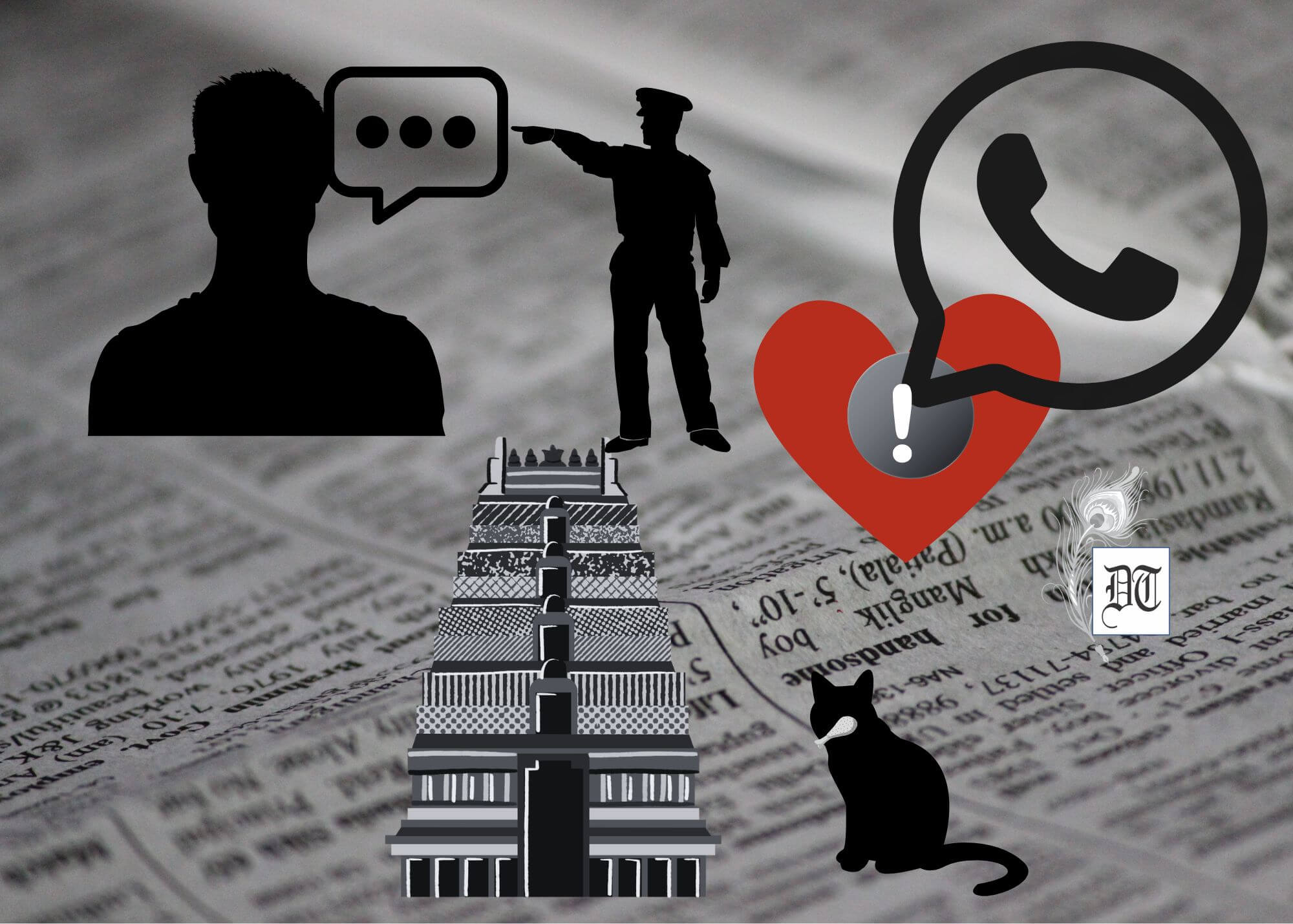Abhignya explores how gender, class, religion, and caste shape Indian identity, exclusively for Different Truths, while Nissim Ezekiel and AK Ramanujan provide nuanced perspectives on their unique India.
The Indian constitution recently turned seventy-six. As a country (long) free from colonial rule and possessing an identity of her own, India occupies a complex place in broad cultural consciousness. There is no one idea of India. One’s gender, class, religion, and caste become windows with which to understand, articulate, and navigate Indianness. Poets Nissim Ezekiel and AK Ramanujan, both Indian but positioned in a liminal, unique manner (the former a Jew and somewhat an outcast, the latter an immigrant), write of their India with evocative nuance.
Nissim Ezekiel (1924–2004) is called the father of Modern Indian English Poetry. Born in a Jewish Bene Israeli family, Ezekiel was a man of reason and science. His father taught botany while his mother ran a girl’s school; he grew up in a setting coloured by reason and acquired a degree in philosophy. He went on to win many accolades, including the Sahitya Academy and Padma Shri. His poem Night of the Scorpion is taught across schools and is an important work. The narrator of the poem recounts (as an adult) an encounter his mother had with a scorpion. As the woman suffers pangs of agony, a hoard of superstitious villages gathers around to offer help, advice, and solace. They chant and pray as the young narrator observes; they seek meaning in her pain. Ezekiel writes:
They clicked their tongues.
With every movement that the scorpion made, his poison moved in Mother's blood, they said.
May he sit still, they said
May the sins of your previous birth
be burned away tonight, they said.
May your suffering decrease
the misfortunes of your next birth, they said.
May the sum of all evil
balanced in this unreal world
against the sum of good
become diminished by your pain.
May the poison purify your flesh
of desire, and your spirit of ambition
In stark opposition to the superstitious, hysterical villagers, the narrator’s father appears to believe only in reason. He tries to help ease his wife’s misery.
My father, sceptic, rationalist,
trying every curse and blessing,
powder, mixture, herb and hybrid.
He even poured a little paraffin
upon the bitten toe and put a match to it.
I watched the flame feeding on my mother.
There is however no respite. For twenty hours, the pain ensues. Upon regaining conscious control of herself, the narrator’s mother is relieved (instead of bitter, as one would assume). Ezekiel ends the poem with:
My mother only said
Thank God the scorpion picked on me
And spared my children.
The poet presents to the reader her picture as an Indian. She is caught between the progressive laws of science and the irrational (sometimes cathartic) rituals her religion demands of her. On the occasions of birth, death, and marriage stereotypes and practices that reinforce problematic, heteronormative notions of caste and gender are accepted and celebrated even. The quintessential Indian, educated and generally hailing from the middle class, often gives in and performs these rituals to appease her elders or not cause trouble for the sake of a day or two (the rest of the time, anyway, she does as she will). Ezekiel’s poem, written a long time ago, still reminds one of the conflicts between faith, tradition, and reason that is typical of the India of the present. The mother in the poem, like many real-life women, is a self-effacing figure who neglects her suffering and thinks only of her children. Is it natural, maternal instinct, or is it cultural conditioning wherein women are taught that the foundation of life rests solely on family? Superstition, patriarchy, and the positive elements of progress coexist in Ezekiel’s India and ours.
AK Ramanujan (1929–1993) also wrote poetry that stemmed from his lived experience. He was a multilingual poet, folklorist, and professor at the University of Chicago. He referred to himself once as the hyphen in the phrase and way “Indo-American.” Living in America (at ease and successfully) as an Indian (seeped in nostalgia for ‘home’), Ramanujan was never truly and completely himself in either country. His poetry, essays, and stories focus on the themes of identity, ambivalence, exile, and rupture. He wrote in Love Poem for a Wife (1): Really, what keeps us apart at the end of years is unshared childhood. In Self-Portrait, Ramanujan touches upon the themes of consumerism, progress, longing, and rootedness:
I resemble everyone but myself,
and sometimes see in shop windows despite the well-known laws of optics,
the portrait of a stranger, date unknown, often signed in a corner by my father.
His short story Annaya’s Anthropology is one text that captures the essence of his writing most authentically. The protagonist, from Mysore and now (dis)placed in the foreign land of Chicago, Annaya, much like Ramanujan himself, begins to mull over his roots. Obsessively, he consumes written material on various aspects of Indian culture and attempts to engage his foreign compatriots in a dialogue encompassing India and her customs (why do Indian women wear the red dot on their foreheads?). Ramanujan writes:
Nehru had to go to England to discover India...
Annaya thus chances upon the American key, to open the many closed doors of Hindu civilization
On one occasion, he stumbles across a book in the library that promises to expound upon the meaning of the rites of birth, death, marriage etc. He is amused and exhibits a textual, clinical interest in the book. He thinks as he reads of the Hindu rituals of death:
Panchagavya—a sacred mixture made from cow's milk, curds, ghee, urine, and dung—is poured into his mouth. A dead human being is unclean. But the urine and dung of a living cow are purifying.
This book and its content are to affect him so that his life will never be the same again. In the book, he comes across photos from ritualistic functions on the death of a family member. These envelop him in dread and a certain feeling of uncomfortable familiarity. Eventually, he is shocked to realise that the dead man in the picture is his father, the house his own, and the widowed wife his mother! He feels defeated by the realisation that his mother tried to shield him from the news because he was away from home and continued to lie to him for over two years. Moreover, he feels dejected and cheated by his cousin Sundararaya (owner of a local photo studio), who collaborated with the writer of the book to exchange photos for money and credit.
Unable to have fulfilled the duties of a son and estranged in a foreign land, Annaya feels a horrid sense of alienation and anger. The story ends on a note of regret and vengeance (Sundararaya survived that day only because he lived 10,000 miles away, across the whole Pacific Ocean, in the street behind the Cheluvamba Agrahara in Hunsur), eliciting, perhaps, a sigh from the reader.
The dramatic irony and attention to detail (how the eponymous character would count in Kannada still, the graphic defamiliarizing descriptions of the ceremonies of dying and death, etc.) are the most appealing aspects of the text. And yet, one layer deeper, as a student and critic of literature, there is much more gravitas to the short story than first meets the eye. Ramanujan poses the following (relevant) questions:
- What constitutes Indianness? Does one need to leave India to understand and appreciate her (like Gandhi, Vivekananda, and Nehru, who “discovered” India whilst away abroad)?
- The “outcaste foreigner,” Steven Fergusson writes a book on Brahminical rituals. This makes Annaya feel both awe and disapproval. What is one’s ideological stance on caste today? Are we gripped by pollution anxiety?
- Annaya hails from a Brahmin family and is at the top of the food chain of caste. He has had the resources to travel and make a career abroad. Can one discuss/understand/critique caste (and, by extension, other issues of gender, race, disability, etc.) whilst being placed in a position of privilege? For instance, how does one view high-end conferences where scholars discuss poverty and marginality after having been driven, well-fed, and fancily housed?
- Annaya is caught off-guard by the dichotomy of theory and experiential knowledge. He derives a certain pleasure (develops an academic interest) as he skim-reads the book. Yet, when he reads the content for what it truly represents, he feels overwhelmed by the cruel irony of the situation. How does one deal with death, and how far apart are theory and experience in life?
Ramanujan, thus, urges the Indian reader to attempt to locate her own complex identity within the palimpsest culture she hails from. India is the land of three hundred Ramayanas (as Ramanujan wrote in his controversial essay; in one version Ram and Sita were siblings, Sita Ravana’s daughter in another), defined by plurality. Her people ought to believe, like Ramanujan and Eziekiel did, in the multiplicity of truths, post-categorical love, and the power of poetry.
Picture design by Anumita Roy






 By
By
 By
By
 By
By
 By
By